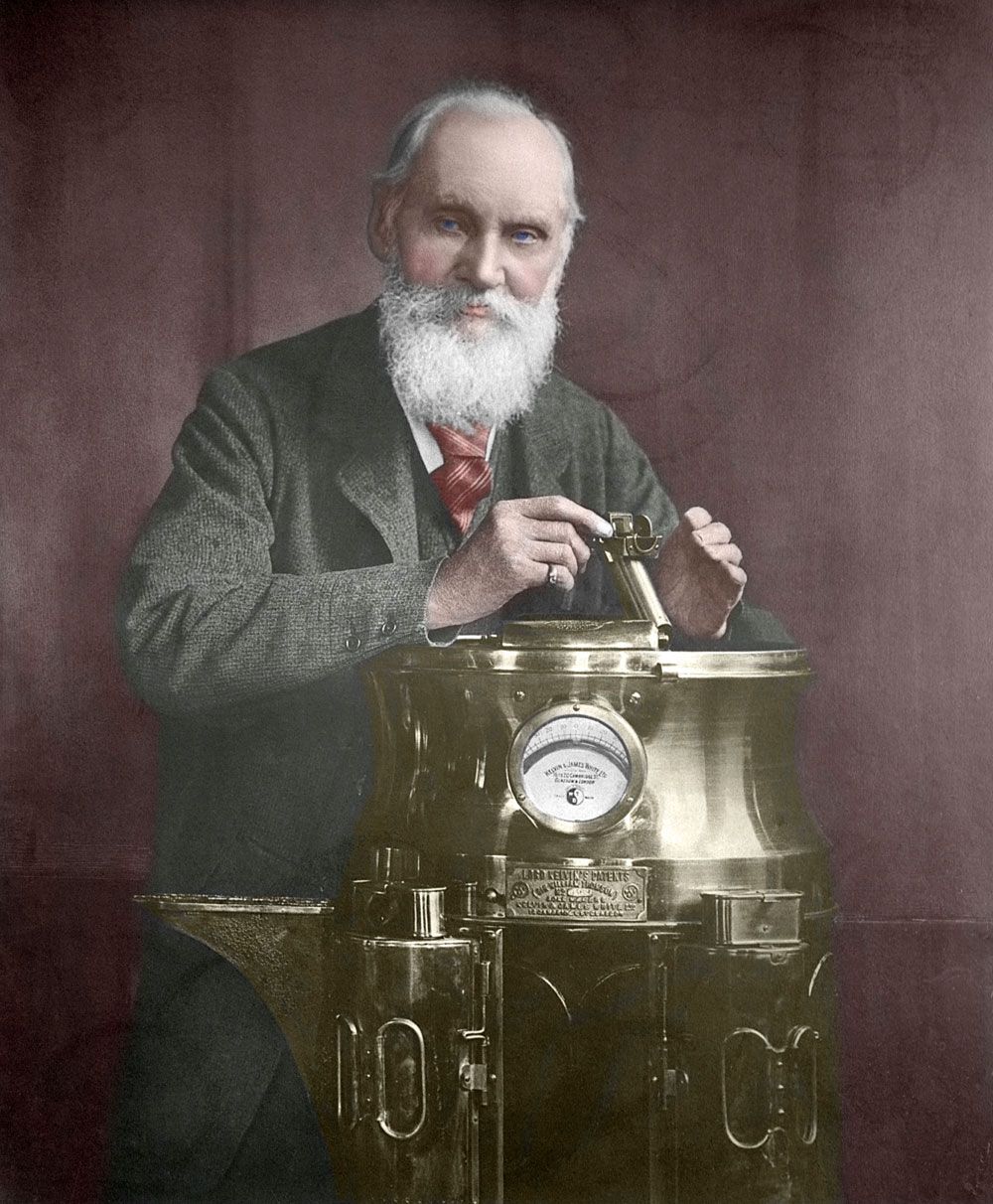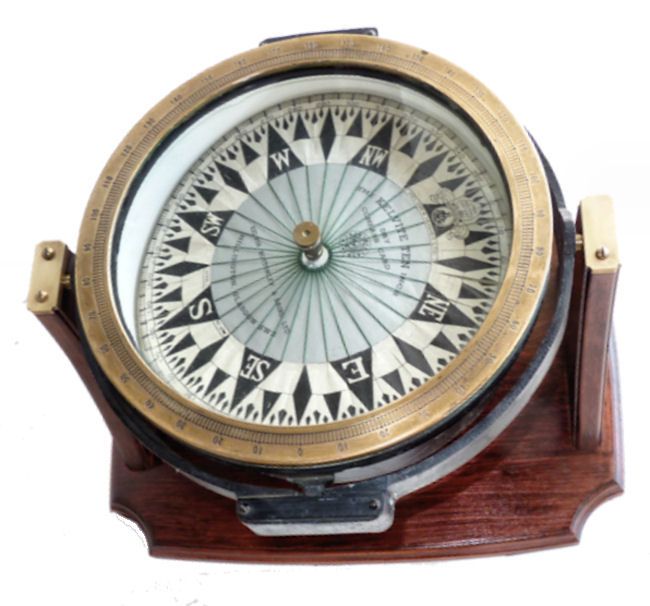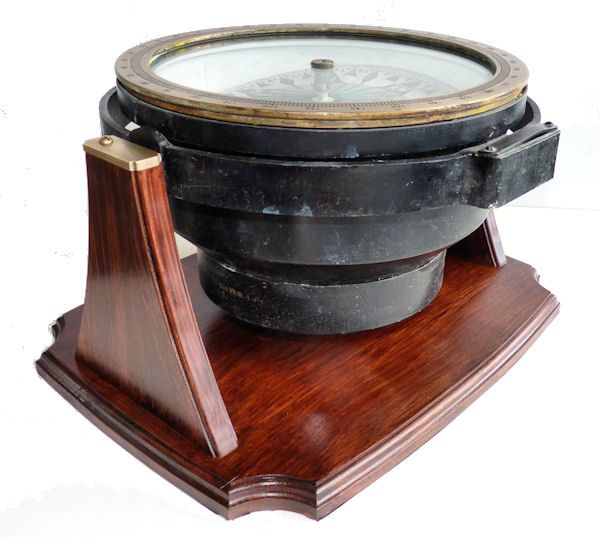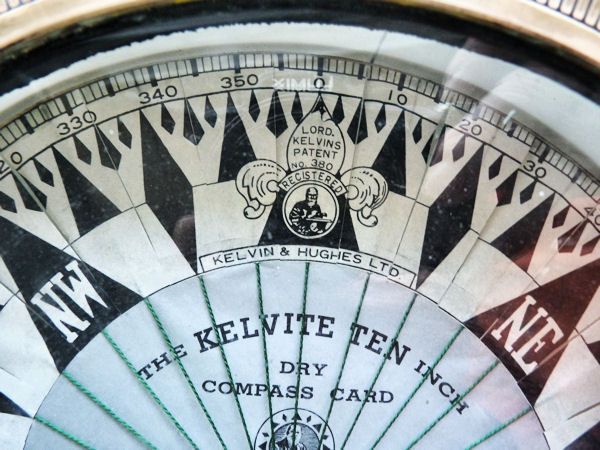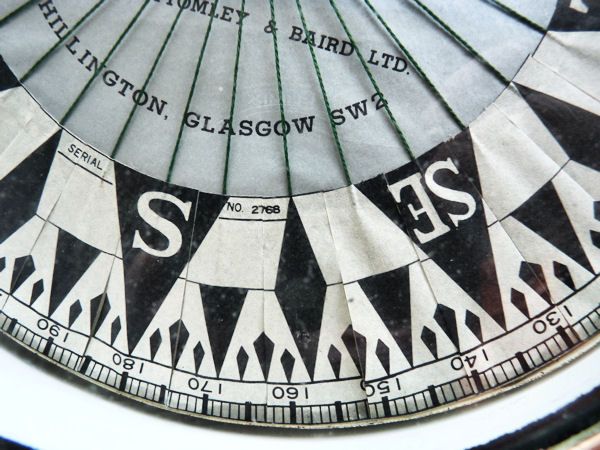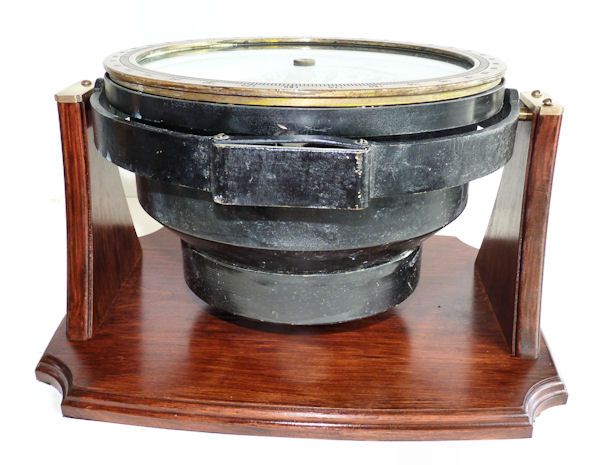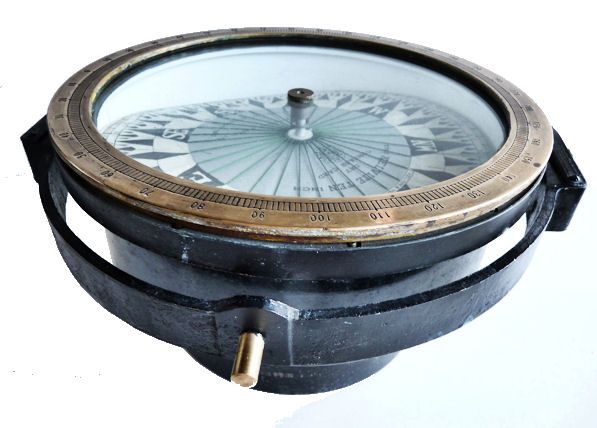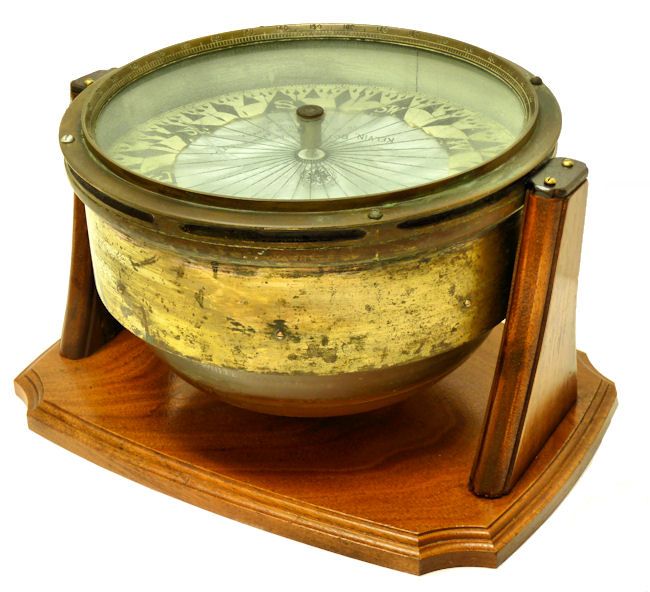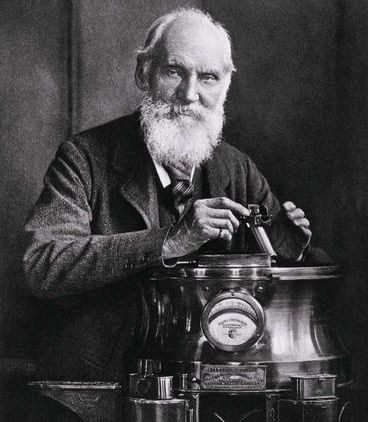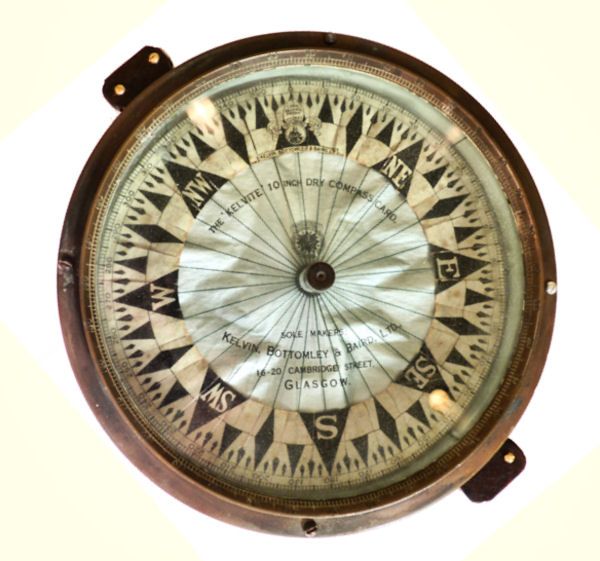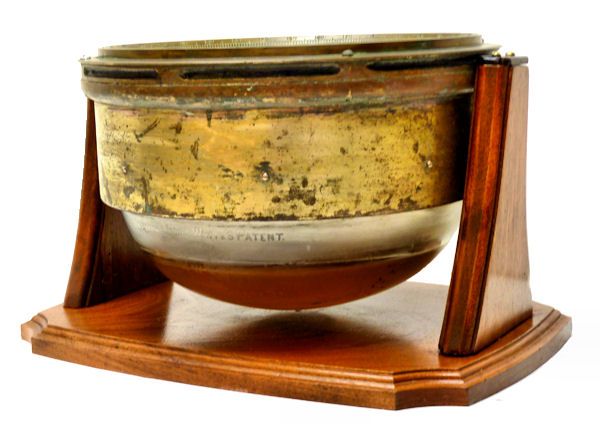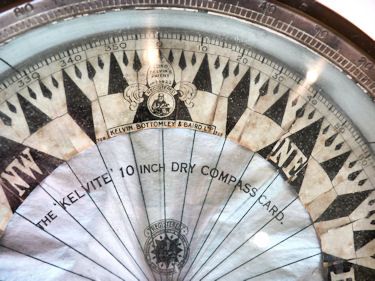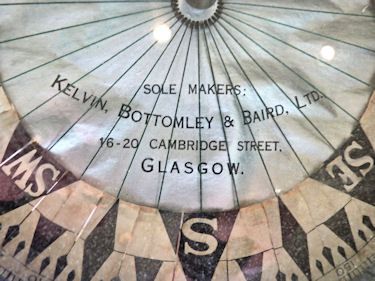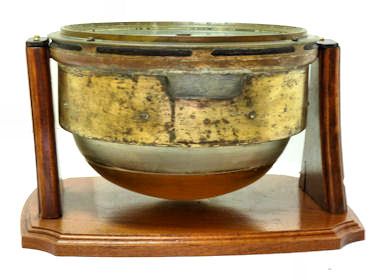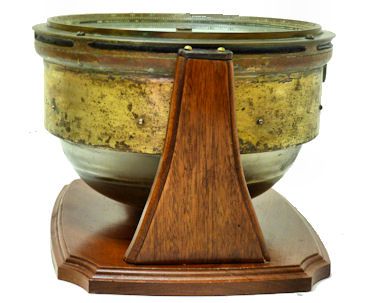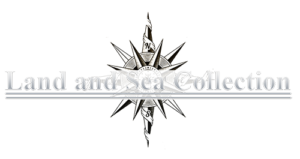KELVIN, BOTTOMLEY & BARD –
SIR
WILLIAM THOMSON
GIANT SHIPS THREADED COMPASS ~ Ca 1920
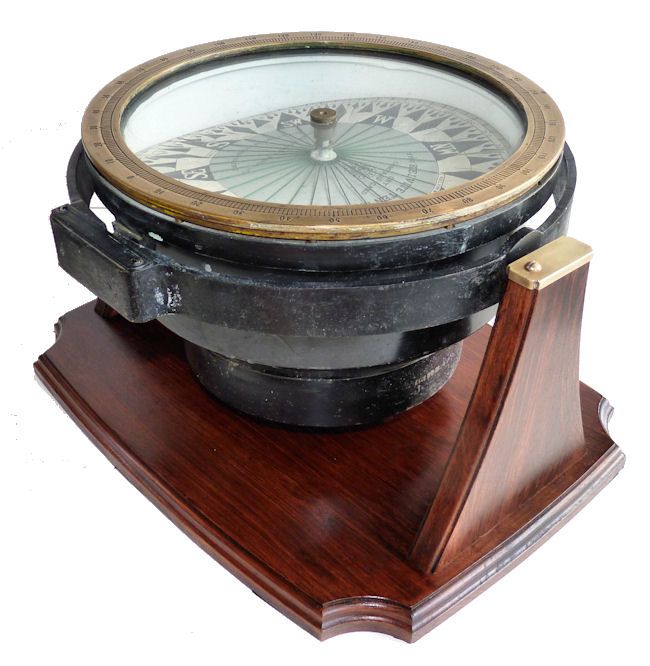
|
Guaranteed “ Extra Fine”
Your chance to get a very rare piece of maritime history with a pedigreed history of historic men and companies |
|
|
|
|
|
This important compass
should appeal to a collector seeking only the most unusual and best for a world class collection.
BRIEF HISTORY
OF INVENTOR: William Thomson (1824-1907), Lord Kelvin of LargsWilliam Thomson was a mathematical physicist, engineer in the physical sciences of the
19th century. He did work in the mathematical analysis of electricity and thermodynamics, and did much to unify the emerging
discipline of physics in its modern form. He is widely known for developing the Kelvin scale of absolute temperature measurement.
In 1892, the title Baron Kelvin was given in honour of his achievements, and named after the River Kelvin, which flowed past
his university in Glasgow, Scotland.He also enjoyed a second career as a telegraph engineer and inventor, a career that propelled
him into the public eye and ensured his wealth, and, fame and is widely known in the marine industry for his work on the magnetic
compass.MARINE ACCOMPLISHMENTS
& COMPANY HISTORY: Thomson was an enthusiastic yachtsman, his interest in all things relating to the sea.Thomson introduced a method of deep-sea sounding, in which a steel piano wire replaces
the ordinary land line. The wire glides so easily to the bottom that “flying soundings” can be taken while the ship is going
at full speed. A pressure gauge to register the depth of the sinker was added by Thomson.About the same time he revived the Sumner method of finding a ship’s place at sea, and
calculated a set of tables for its ready application. He also developed a tide predicting machine.During the late 1870’s, Thomson worked to perfect the adjustable compass in order to correct
errors arising from magnetic deviation owing to the increasing use of iron in naval architecture. Thomson’s design was a great
improvement on the older instruments, being steadier and less hampered by friction, the deviation due to the ship’s own magnetism
being corrected by movable masses of iron at the binnacle. Thomson’s innovations involved much detailed work to develop principles
already identified by George Biddell Airy and others but contributed little in terms of novel physical thinking. His energetic
lobbying and networking proved effective in gaining acceptance of his instrument by The Admiralty.The origins of this compass lie in the highly
successful, but informal, relationship between William Thomson (1824-1907), Professor of Natural Philosophy at Glasgow University
from 1846-1899 and James White, a Glasgow optical maker. James White (1824-1884) founded the firm of his name, in Glasgow
in 1850. White was involved in supplying and repairing apparatus for Thomson’s university laboratory and working with him
on experimental models. Thompson had a long association with James White.From 1876, White was producing compasses
for metal ships to Thomson’s design. White was also involved in the production of Thomson’s other designs for laying cables
at sea. White’s association with Thomson continued until he died, and their company continued as Kelvin-White.
In
1884 Kelvin raised most of the capital needed to construct and equip new workshops in Cambridge Street, Glasgow. At the Cambridge
Street premises, the company continued to make the compass Thomson had designed during the 1870s and to supply it in some
quantity, especially to the Admiralty. At the same time, the firm became increasingly involved in the design, production and
sale of electrical apparatus.In 1899, Lord Kelvin resigned
from his University chair and became, in 1900, a director in the newly formed company, Kelvin & James White Ltd which
incorporated the business of James White. At the same time, Kelvin’s nephew, James Thomson Bottomley (1845-1926), joined the
firm.
Kelvin
& James White Ltd underwent a further change of name in 1913, becoming Kelvin Bottomley & Baird Ltd. Following the
formal amalgamation of In 1947, Kelvin, Bottomley & Baird Ltd and Henry Hughes & Sons Ltd combined to form Kelvin
& Hughes Ltd., and in 1964 became a part of Smith’s Industries Ltd.Some
marine historians portray Thomson as a man of undoubted talent and enthusiasm, with some genuine knowledge of the sea, who
managed to parlay a handful of modest ideas in compass design into a commercial monopoly for his own manufacturing concern,
using his exulted personal reputation to repel even small claims of originality from others, and persuading the Admiralty
and the law to overlook both the deficiencies of his own design and the virtues of his competitors. Edited
and corrected from Wkiipedia and other sources.
BRIEF HISTORY OF HENRY HUGHES & SONS: Henry
Hughes & Sons was founded in 1838 in London as a maker of chronographic and scientific instruments. The firm was incorporated
as Henry Hughes & Sons Ltd in 1903 and in 1923, the company produced its first recording echo sounder. In 1935, a controlling
interest in the company was acquired by S. Smith & Son Ltd resulting in the development of marine and aircraft instruments.
Following the London office’s destruction in the Blitz of 1941, a collaboration was entered into with Kelvin, Bottomley &
Baird Ltd, resulting in the establishing of Marine Instruments Ltd. Following the formal amalgamation of Kelvin, Bottomley
& Baird Ltd and Henry Hughes & Sons Ltd in 1947 to form Kelvin & Hughes Ltd, Marine Instruments Ltd acted as regional
agents in the UK for Kelvin & Hughes Ltd who were essentially now a part of Smith’s Industries Ltd founded in 1944 as
the successors of S. Smith & Son Ltd. The
well known “HUSUN” trademark was in use starting in the
1920s.
OUR UNCONDITIONAL GUARANTEE:
If not completely satisfied with your purchase it may be returned, if without damage, within three days of receipt in its
original condition and packaging. Returns must be insured for their full value. All that is required is a prior email authorization
by us for the return. Unfortunately, no refund can be made for the cost of shipping, packaging and handling unless we are
at fault.
International buyers welcome, but inquire first. We have satisfied
customers in Argentina, Australia, Austria, Belgium, Bermuda, British Virgin Islands, Canada, Chile, China, Czech Republic,
Democratic Republic of Congo, Denmark, Estonia, England, France, Germany, Greece, Holland, Hong Kong, Hungary, Iceland, Indonesia,
Ireland, Israel, Italy, Japan, Kuwait, Latvia, Luxembourg, Malaysia, Martinique, Mexico, New Zealand, Nigeria, Norway, Nova
Scotia, Panama, Philippines, Poland, Portugal, Puerto Rico, Romania, Russia, Saudi Arabia, Scotland, Singapore, South Africa,
Spain, St. Maarten, Sweden, Switzerland, Thailand, Turkey, United Arab Emirates, USVI and the Eastern Caribbean.SHIPPING & PACKING: The cost of shipping, packing, handling, and insurance
to your destination, is an additional charge. You may email us to get these costs. We price our very special packing and shipping
honestly, but we expect to be reimbursed for the nominal cost of packaging materials and handling.
ACCEPTED FORMS OF PAYMENT
are Bank wire transfer, cashier’s check, money order, or personal check in which case the item will be held until cleared.
No checks from overseas buyers, no credit cards or PayPal accepted on this item.“>
“>
Buy this very special pedigreed relic of maritime history Now! What a great find
for that special person who can appreciate only the best!Copyright
2012 by Land And Sea Collection™, All Rights Reserved
To view our current inventory of antique and vintage dry card compasses, click here!
This important
Some marine historians portray Thomson as a man of undoubted BRIEF HISTORY OF HENRY HUGHES & SONS: Henry Hughes & Sons was founded in 1838 in London as a maker of chronographic and scientific instruments. The firm was incorporated as Henry Hughes & Sons Ltd in 1903 and in 1923, the company produced its first recording echo sounder. In 1935, a controlling interest in the company was acquired by S. Smith & Son Ltd resulting in the development of marine and aircraft instruments. Following the London office’s destruction in the Blitz of 1941, a collaboration was entered into with Kelvin, Bottomley & Baird Ltd, resulting in the establishing of Marine Instruments Ltd. Following the formal amalgamation of Kelvin, Bottomley & Baird Ltd and Henry Hughes & Sons Ltd in 1947 to form Kelvin & Hughes Ltd, Marine Instruments Ltd acted as regional agents in the UK for Kelvin & Hughes Ltd who were essentially now a part of Smith’s Industries Ltd founded in 1944 as the successors of S. Smith & Son Ltd. The well known “HUSUN” trademark was in use starting in the 1920s. OUR UNCONDITIONAL GUARANTEE:
SHIPPING & PACKING: |
